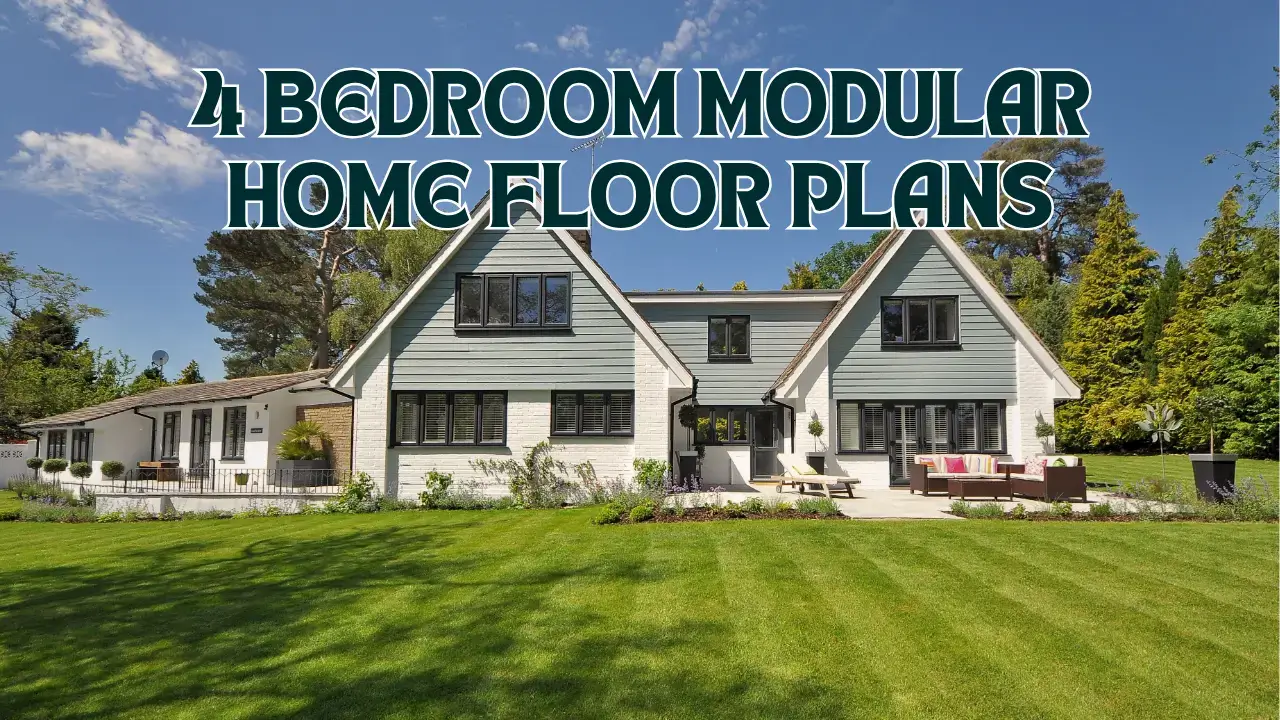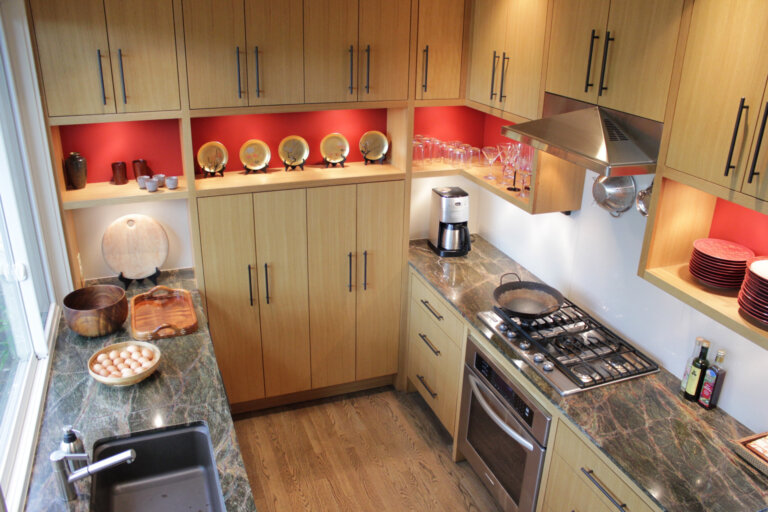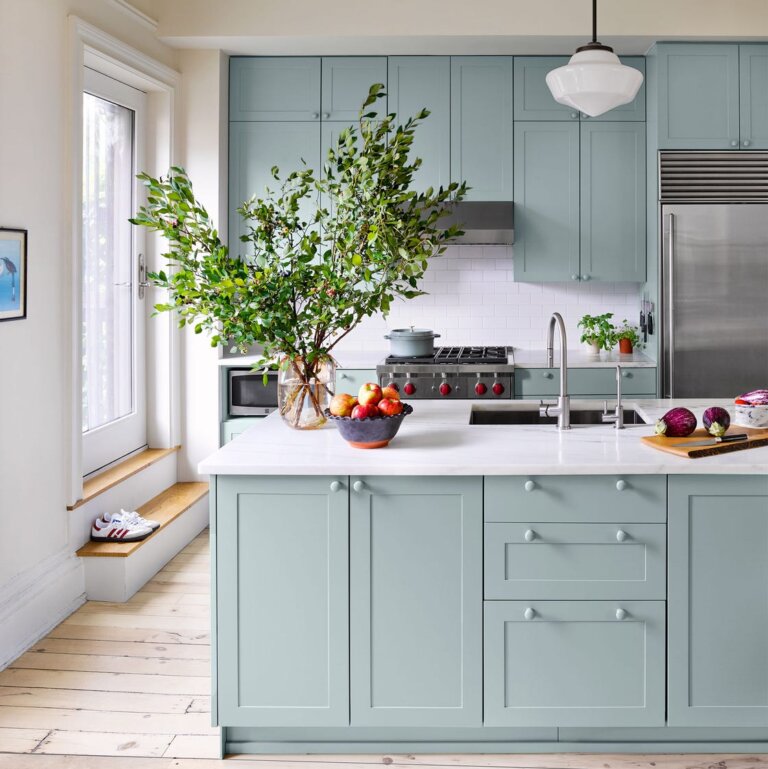When it comes to building your dream home, balancing space, comfort, and affordability is no small task. That’s where 4 bedroom modular home floor plans step in as a game-changer. Modular homes are becoming an increasingly popular solution for families and investors alike, thanks to their flexibility, efficiency, and stunning design potential. In this ultimate guide, we’re diving deep into everything you need to know—from floor plan ideas to customization, budget tips, and design inspirations. Whether you’re planning for a growing family or just want extra space for guests, hobbies, or a home office, a 4-bedroom modular home might just be the perfect fit.
Introduction to Modular Homes
What Are Modular Homes?
Modular homes, sometimes called prefab homes, are constructed in sections (or modules) within a factory-controlled environment. Once completed, these modules are transported to the building site and assembled on a permanent foundation. Unlike mobile homes, modular homes meet the same building codes and standards as site-built homes.
This method of construction offers significant advantages over traditional building, such as shorter timelines and improved quality control. Because these homes are built indoors, there’s less exposure to the elements, which reduces delays and material damage. The modular process also allows for more predictable costs and timelines—making it a stress-free option for homeowners.
And let’s talk design: modern modular homes can be virtually indistinguishable from stick-built homes. From ranch-style to two-story builds, the possibilities are endless. You can customize your layout, finishes, and features just as you would in any other custom home.
Benefits of Choosing a Modular Home
Why are so many homeowners turning to modular homes, especially for larger floor plans like 4-bedroom models? Here are some major perks:
- Speed of Construction: Most modular homes can be built in 50% less time than traditional homes.
- Cost Efficiency: Building in a factory setting cuts down on labor and material waste, keeping prices lower.
- Customization Options: You don’t have to sacrifice style for savings. Modular homes offer vast design flexibility.
- Environmental Benefits: These homes tend to produce less waste and can be designed with eco-friendly materials and energy-efficient systems.
- Consistent Quality: With precision engineering and inspections at every step, modular homes often exceed quality standards.
In essence, modular homes provide a modern, efficient, and customizable alternative to traditional construction without compromising on comfort or style.
4 Bedroom Modular Home Floor Plans Cost Calculator
Why Choose a 4 Bedroom Floor Plan?
Space for the Whole Family
If you’re building a home for a growing family, planning for the future, or simply value spacious living, a 4-bedroom floor plan offers unmatched versatility. One of the top reasons people opt for a 4-bedroom design is the need for space—not just for sleeping, but for living.
Each additional bedroom can serve a unique purpose. Think of one as a home office, another as a guest suite, a third for the kids, and the master as your personal sanctuary. This kind of flexibility is invaluable, especially in today’s world where remote work and hybrid lifestyles have become the norm.
Beyond utility, a 4-bedroom layout can make everyday life more comfortable. No more arguing over shared rooms or lack of privacy. With more rooms, everyone gets their own corner of the house to unwind, work, or play. It’s about creating a space where everyone can coexist harmoniously—without stepping on each other’s toes.
Increased Property Value
From an investment standpoint, a 4-bedroom modular home can be a smart financial move. Larger homes generally have higher resale values, and in a competitive market, a spacious layout is a huge selling point. Whether you’re planning to live in your home for decades or thinking ahead to resale, that extra bedroom (or two) could translate to thousands more in equity.
Real estate trends consistently show that 4-bedroom homes strike a sweet spot. They’re large enough to meet the needs of most families, but not so big that they become expensive to maintain. Plus, with modular construction reducing costs, your return on investment is often higher compared to traditional builds.
Key Features of 4 Bedroom Modular Homes
Room Layouts and Flow
One of the standout features of a well-designed 4-bedroom modular home is its layout. Good design isn’t just about square footage—it’s about how that space is used. The best floor plans prioritize functionality and flow, ensuring that movement between rooms feels natural.
For instance, master bedrooms are often positioned on one end of the home for privacy, while the remaining bedrooms cluster on the opposite side near a shared bathroom. Common areas like the kitchen, living room, and dining space are typically centrally located to serve as the heart of the home. This “split-bedroom” design is not only practical but enhances comfort and tranquility.
Many floor plans also feature open-concept living, making the kitchen and living area feel expansive and inviting. For families with children, this setup allows for better supervision and more inclusive family time. Meanwhile, optional extras like walk-in closets, en-suite bathrooms, and bonus rooms add a touch of luxury and personalization.
A solid layout maximizes every inch of your modular home—no dead space, no awkward corners, just smart, efficient design.
Popular 4 Bedroom Modular Home Layouts
Ranch-Style Modular Homes
Ranch-style modular homes are among the most sought-after 4-bedroom designs, especially for families and retirees alike. These single-story layouts offer simplicity, accessibility, and plenty of room to spread out. There’s no need to worry about stairs, making them ideal for young kids, older adults, or anyone with mobility challenges.
A typical ranch modular plan places the master suite at one end and the other three bedrooms at the opposite end, with the kitchen and living areas in the center. This division of space provides privacy without sacrificing connection.
Another major benefit? Ranch-style homes are incredibly customizable. You can opt for vaulted ceilings, open-plan kitchens, integrated garage space, and even covered patios or porches. And since everything is on one level, heating and cooling costs tend to be lower, contributing to long-term savings.
These designs combine timeless charm with modern functionality—a perfect match for those who want both beauty and brains in their floor plan.
Customization Options for 4 Bedroom Modular Homes
Interior Finishes and Fixtures
One of the biggest misconceptions about modular homes is that they come with limited design choices. The truth? Today’s modular homes offer an abundance of interior customization options that rival, and often surpass, traditional homes. From hardwood flooring to quartz countertops, you can make your 4-bedroom modular home truly your own.
You’ll start by choosing the basics: wall colors, flooring types, cabinetry, and countertops. But you can go even deeper with personalized touches like accent walls, decorative backsplashes, statement lighting, and built-in shelving. Want a spa-like master bath? You can add that. Dreaming of a gourmet kitchen with a double oven and wine fridge? That’s totally possible too.
Builders typically offer several tiers of finish packages—basic, premium, and luxury—so you can align your vision with your budget. And because the home is built indoors, these finishes are installed in a controlled environment, ensuring precision and quality.
Think of your modular home as a blank canvas—your creativity and needs dictate the masterpiece it becomes.
Exterior Design Choices
Modular homes today are a far cry from the cookie-cutter boxes of the past. With modern design options, you can give your 4-bedroom modular home a stunning curb appeal. Whether you’re into classic farmhouse charm, sleek modern minimalism, or rustic cabin vibes, you’ve got a wide range of exterior finishes at your fingertips.
Choose from siding materials like vinyl, fiber cement, or wood. Add stone or brick accents for a more traditional look, or go bold with metal panels for a contemporary edge. Roof options, porch designs, trim accents, and window styles can all be tailored to suit your taste.
Don’t forget landscaping elements. Some modular home packages even offer decks, patios, and driveways as add-ons. These details not only boost your home’s aesthetic appeal but also increase its value.
In short, just because it’s modular doesn’t mean it has to be ordinary.
Smart Home Features
In the age of tech-savvy living, your 4-bedroom modular home can be equipped with the latest smart home technology. From voice-activated assistants to remote-controlled lighting, climate systems, and even security features, you can build a home that’s not just modern in design—but also in function.
Imagine controlling your thermostat from your smartphone while at work, or checking your doorbell camera while you’re on vacation. Modular builders now offer integration with smart thermostats, lighting, door locks, security systems, and entertainment systems during the design phase.
You can even take energy savings up a notch with programmable lighting, motion sensors, and smart appliances. Not only do these features add convenience and safety, but they also make your home future-proof and attractive to tech-minded buyers.
Budgeting for a 4 Bedroom Modular Home
Cost Breakdown
Budgeting for a 4-bedroom modular home involves several components, and understanding them can help you avoid unexpected surprises. Generally, the base cost of a modular home ranges from $100 to $200 per square foot, depending on the complexity and finishes you choose. For a 4-bedroom layout, you’re typically looking at 1,600 to 2,500 square feet, which puts the ballpark figure between $160,000 and $500,000.
Here’s a general breakdown of where your money goes:
- Base Module Construction: Includes walls, roof, floors, and internal layout – about 60% of the total cost.
- Site Prep and Foundation: Leveling the land, pouring the foundation – 10–15%.
- Transportation and Assembly: Delivering and assembling modules – 5–10%.
- Interior and Exterior Customizations: Flooring, cabinets, paint, siding, etc. – 10–20%.
- Utility Connections: Hooking up to water, sewer, and power – 5%.
These numbers can fluctuate based on location, materials, and design complexity. But modular homes remain significantly more cost-efficient than stick-built homes.
Financing Options and Considerations
Financing a modular home isn’t drastically different from financing a traditional home, but there are a few key nuances to be aware of. Most lenders offer construction-to-permanent loans, which cover both the building phase and the final mortgage. These loans typically disburse funds in stages as construction progresses.
To get started, you’ll need:
- Good Credit Score: Aim for 620 or above.
- Detailed Construction Plans: Lenders require blueprints and cost estimates.
- Down Payment: Usually 10–20% of the total cost.
- Land Ownership or Purchase Agreement: You’ll need land, either owned or under contract.
It’s also worth exploring modular-home-specific lenders, as they often have experience navigating the unique aspects of prefab construction. Some builders even partner with financing companies to streamline the process.
Don’t forget to budget for permits, taxes, and insurance—often overlooked but critical components of your overall financial plan.
Energy Efficiency and Sustainability
Green Building Materials
Eco-conscious buyers are increasingly turning to modular homes because of their inherently sustainable construction methods. The factory-controlled setting reduces material waste by up to 50% compared to traditional construction. But that’s just the beginning.
Modular home builders now offer a wide range of green building materials like:
- Low-VOC Paints and Adhesives: Healthier air quality indoors.
- Bamboo and Cork Flooring: Renewable and stylish.
- Recycled Insulation Materials: Keep you warm while reducing landfill waste.
- Metal or Reclaimed Wood Siding: Durable and environmentally friendly.
These choices don’t just benefit the planet—they often result in lower utility bills and long-term maintenance costs.
Insulation and Energy Ratings
One major factor in a home’s efficiency is its insulation and overall energy performance. Modular homes can be built to meet or exceed ENERGY STAR ratings, meaning they require less energy for heating, cooling, and electricity.
Builders often use advanced insulation materials like spray foam, rigid foam boards, and double-glazed windows to keep indoor temperatures stable. Sealed ductwork, efficient HVAC systems, and LED lighting also contribute to high energy efficiency ratings.
You can even opt for solar-ready roofs or integrated solar panel systems, making it easier to transition to renewable energy. All these features not only reduce your carbon footprint but can save you thousands over the life of your home.
Tips for Designing the Perfect 4 Bedroom Layout
Balancing Functionality and Aesthetics
When designing a 4-bedroom modular home, it’s easy to focus solely on aesthetics—granite countertops, fancy fixtures, and modern finishes. But design without functionality quickly turns into frustration. The goal is to strike a perfect balance between beautiful spaces and smart use of every square foot.
Start by identifying your family’s lifestyle needs. Are you working from home? Then prioritize a quiet, separate office space. Got teenagers? You might want larger closets and a shared hangout area. Regular guests? A private guest suite with its own bathroom adds value.
Next, think about flow. How will people move from room to room? An open floor plan might look good in photos, but does it meet your need for noise control or privacy? Strategic placement of doors, hallways, and multi-use spaces can make a world of difference.
Finally, don’t underestimate storage. Built-in shelving, walk-in closets, and pantry space are game-changers that help keep your home organized and clutter-free. A well-designed modular floor plan is like a puzzle—each piece should fit your lifestyle, not just your Pinterest board.
Adapting to Your Family’s Lifestyle
Your 4-bedroom modular home should evolve with your family. Kids grow, parents age, and work situations change. Designing with future flexibility in mind ensures your home stays functional for years to come.
Consider multi-purpose rooms. A fourth bedroom today might serve as a nursery but could later become a study room, gym, or even a second master suite for aging parents. Think about accessibility too. Wider doorways, open hallways, and single-story living make it easier to accommodate changing mobility needs.
Also, think long-term about utilities and layout. If you plan to install solar panels, ensure your roof orientation supports it. If you might expand in the future, make sure there’s enough land and utility access to do so.
Flexibility is key. The best modular homes are those that grow with you, adjusting to your journey—not the other way around.
Real-Life Examples and Case Studies
Urban 4 Bedroom Modular Home
In densely populated urban areas where space is tight and construction costs are high, modular homes have carved out a niche as the go-to option for modern families. Take the example of a young professional couple in Austin, Texas, who built a sleek, 4-bedroom modular home on a compact lot just minutes from downtown.
Their home features a smart vertical design: a compact footprint with two stories. The first floor houses the common living areas—a spacious open-concept kitchen, dining, and living room—while all four bedrooms are tucked upstairs for privacy. Large windows bring in natural light and views of the city, while energy-efficient appliances and a green roof cut down on their carbon footprint.
By choosing modular, they completed the entire home—from design to move-in—in under five months and saved nearly 25% compared to traditional building costs. This case proves that even in crowded cities, you can build a luxurious, efficient family home without compromise.
Suburban Family Modular Design
On the flip side, in a quiet suburb of Nashville, a family of five opted for a sprawling ranch-style 4-bedroom modular home with plenty of outdoor space. Their priority was functionality—separate rooms for each child, a spacious master suite, and a multipurpose room for hobbies and homeschooling.
Their home spans over 2,400 square feet and includes an oversized kitchen, two full bathrooms, a mudroom, and even a three-car garage. The parents chose soft, neutral interiors with durable flooring, perfect for young kids and pets. They also added solar panels and a rainwater harvesting system, making their home both eco-friendly and budget-friendly.
The total cost came in at just under $300,000—impressive for a fully customized, energy-efficient home of that size. Their story shows how modular construction can make suburban living more affordable without sacrificing quality or comfort.
How to Work with Modular Home Builders
Finding the Right Manufacturer
Choosing the right modular home builder is critical to the success of your 4-bedroom project. You’re not just hiring someone to build walls—you’re trusting them to create the space where you’ll make memories for years to come. So, how do you find the right partner?
Start with research. Look for companies that specialize in 4-bedroom layouts and have a proven portfolio. Read reviews, request floor plans, and schedule consultations. During these talks, assess their communication, willingness to customize, and understanding of local codes.
Ask about:
- Experience and track record
- Licensing and insurance
- Warranty policies
- Previous customer testimonials
- On-time delivery rates
It’s also wise to visit a model home or tour their factory if possible. This gives you a sense of the construction quality and attention to detail. A great builder will be transparent, informative, and excited to bring your vision to life.
Key Questions to Ask
When interviewing potential builders, don’t hold back. The more you ask now, the fewer surprises you’ll face later. Here are some crucial questions to bring up:
- What’s included in the base price?
- Can I customize the floor plan and finishes?
- How long does the entire process take?
- What are the site prep and delivery fees?
- Do you assist with permits and inspections?
These questions help you gauge not only the company’s competence but also how flexible and supportive they’ll be during your build. The goal is to partner with a builder who treats your project with the care it deserves.
Common Mistakes to Avoid When Planning
Overlooking Storage
One of the most common pitfalls in designing a 4-bedroom modular home is underestimating the need for storage. While it’s easy to get excited about bedrooms and bathrooms, don’t forget that every family accumulates stuff—and lots of it.
Closets, pantries, linen storage, garage cabinets, and attic access all play crucial roles in keeping your home organized. Modular homes can be designed with clever storage solutions like built-in benches, under-stair drawers, custom closets, and walk-in pantries.
Always think one step ahead. Where will you store seasonal decorations? What about sports gear, pet supplies, or hobby equipment? Plan these spaces intentionally to avoid a cluttered, chaotic home later.
Ignoring Future Needs
It’s tempting to design a home for today, but the best modular floor plans are those that adapt to your future. Are you planning to expand your family? Will you need space for elderly parents or kids moving back after college?
Ignoring these possibilities could mean costly renovations down the line. Instead, design rooms that can change purpose. A nursery today could become an office tomorrow. A guest room could be outfitted with a Murphy bed to double as a fitness room.
Also consider infrastructure for future upgrades—like extra electrical wiring for a hot tub, or plumbing for an outdoor kitchen. It may cost a bit more upfront but saves thousands later.
Legal and Zoning Considerations
Local Codes and Permits
Before you even break ground, you’ll need to navigate the maze of local building codes and zoning regulations. Modular homes are subject to the same rules as site-built homes, so everything from height restrictions to setback distances applies.
Your builder should be familiar with your local jurisdiction, but it’s your job to ensure all permits are in place. This might include:
- Building and electrical permits
- Septic and well approvals
- Zoning clearance
- Occupancy certificate
Skipping these steps can lead to major delays, fines, or even forced removal of your home.
Zoning laws may also dictate where you can place your modular home. Some neighborhoods or municipalities still have outdated regulations that don’t favor modular construction. Be sure to verify whether your lot is zoned for modular builds and if any restrictions apply.
HOA Restrictions
If you’re building in a neighborhood governed by a homeowners association (HOA), you’ll need their blessing too. HOAs often enforce rules regarding home appearance, landscaping, and materials—all of which can impact your modular design.
Submit your plans early and be prepared for a review process. Sometimes you’ll need to tweak your exterior finishes or roofline to gain approval. While this might feel like a hassle, it’s crucial for a smooth build.
Knowing these legal and zoning factors ahead of time saves you from costly surprises and ensures your modular dream home becomes a reality.
Timeline for Building a Modular Home
From Design to Move-In
One of the most attractive aspects of modular construction is the speed. While traditional homes can take anywhere from 9 months to over a year to complete, a 4-bedroom modular home can be designed, built, and move-in ready in as little as 4 to 6 months. Here’s a breakdown of a typical timeline:
- Planning and Design (2–4 weeks): Work with your builder to finalize your layout, finishes, and features.
- Permits and Site Preparation (4–6 weeks): While your home is being built off-site, your land is being prepared—foundation, utility connections, etc.
- Factory Construction (6–10 weeks): Your modules are constructed indoors, which prevents weather delays and speeds up the process.
- Delivery and Assembly (1–2 weeks): The modules are delivered and assembled on your foundation, often within days.
- Final Touches and Inspection (2–4 weeks): Roofing, exterior details, interior finishes, and local code inspections are completed.
Because many tasks happen simultaneously (site work and module construction), the total build time is significantly shorter. This not only gets you in your new home faster but also saves money on interim housing or rent.
Delays to Anticipate
Despite the streamlined process, delays can still happen. Some of the most common reasons include:
- Permit Hold-ups: Local authorities can be slow to approve building and zoning permits.
- Weather Conditions: While modular modules are built indoors, site prep can be affected by rain, snow, or extreme temperatures.
- Transportation Issues: Delivery of large modules requires specialized logistics and can be delayed due to route restrictions or mechanical issues.
- Customization Changes: If you request last-minute design changes, this can stall progress and impact the budget.
Working with a reputable modular builder who communicates well and keeps a tight schedule can help you avoid or minimize most delays.
Maintenance and Longevity of Modular Homes
Routine Care Tips
Just like any home, modular homes require regular maintenance to stay in top condition. The good news? Because of their precise construction and high-quality materials, modular homes often demand less upkeep than traditional homes.
Here are some maintenance tasks to stay on top of:
- Check Roofing and Gutters: Inspect annually for leaks, especially after storms.
- Inspect Siding and Exterior Paint: Ensure there’s no water damage, mold, or peeling.
- HVAC Maintenance: Change filters regularly and service your system annually.
- Foundation Check: Look for cracks or shifting.
- Sealants and Caulking: Windows, doors, and joints should be resealed every few years.
Most manufacturers offer a warranty (often 1 year for general issues, 10 years for structural elements), but you should still schedule regular checkups. A well-maintained modular home can last 50+ years easily.
Long-Term Durability
There’s a persistent myth that modular homes aren’t as durable as site-built homes—but it’s just not true. In fact, modular homes are often more durable because they have to withstand transportation from factory to site. This means stronger framing, reinforced walls, and tighter construction tolerances.
Many modular homes are built to meet or exceed local building codes, including those for hurricanes, earthquakes, and other environmental challenges. With proper care, a modular home can last just as long—and look just as good—as any traditional house.
Conclusion
When it comes to smart, stylish, and efficient living, 4-bedroom modular home floor plans offer a compelling solution for families, investors, and modern homeowners. Whether you’re drawn to the fast construction, flexible design, eco-friendly benefits, or cost-effectiveness, modular homes give you the power to build your dream space without the typical headaches of traditional construction.
With a wealth of customization options, impressive durability, and the ability to adapt to any lifestyle or stage of life, these homes truly embody the best of modern housing innovation. From sleek urban layouts to sprawling suburban ranches, there’s a 4-bedroom modular plan out there with your name on it.
So if you’re ready to ditch the delays, sidestep the surprises, and take control of your home-building journey, it might be time to consider going modular. Trust us—once you experience the ease, value, and style of modular living, you’ll wonder why you didn’t do it sooner.
FAQs
1. Are modular homes cheaper than traditional homes?
Yes, modular homes typically cost 10–25% less than traditional site-built homes. This is mainly due to reduced labor costs, less material waste, and faster construction timelines.
2. How long does it take to build a 4 bedroom modular home?
Most 4-bedroom modular homes can be completed in 4 to 6 months from design to move-in, depending on customization, permitting, and weather conditions.
3. Can I customize my 4 bedroom modular floor plan?
Absolutely! Modular homes offer extensive customization—from layout changes and room additions to personalized finishes and smart home features.
4. What is the resale value of a modular home?
Modular homes appreciate in value similarly to traditional homes, especially when well-maintained. Their resale value depends on location, market demand, and overall condition.
5. Are modular homes safe during natural disasters?
Yes, modular homes are built to stringent building codes and often exceed safety standards. Many are engineered to withstand high winds, earthquakes, and heavy snow loads.

My name is Mahi Uddin, and I’m a blog writer with over two years of experience specializing in creating engaging, informative content using AI tools. I contribute to InExDecor.com, where I share creative ideas and practical tips for transforming interior and exterior spaces into beautiful, functional environments. With a passion for storytelling and a knack for blending creativity with technology, I strive to craft blogs that not only inform but also inspire readers. When I’m not writing, you can find me exploring design trends or enjoying a good book with a cup of coffee.








